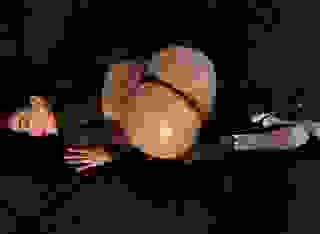Note: You can change font size, font face, and turn on dark mode by clicking the "A" icon tab in the Story Info Box.
You can temporarily switch back to a Classic Literotica® experience during our ongoing public Beta testing. Please consider leaving feedback on issues you experience or suggest improvements.
Click hereNguyễn: "Fine {grumble} three million, but you had better not leave me looking like Leon Trotsky in desperate need of a raincoat in Mexico City when all of this comes out."
Raúl: "Perish the thought. If this works out ~ positively ~ I won't forget this."
Nguyễn: "You will be advancing goodwill toward the Cuban people in the corridors of power ..."
Raúl: "I'll take the hard, cold currency, thank you very much."
Nguyễn: "How the struggle has been ... transformed."
Raúl: "Such is life. I'll get right on this."
Nguyễn: "I appreciate it. I really do."
Raúl: "Well ..."
Nguyễn: {uh oh}
Raúl: "Are your violently reactionary allies in Central Asia ... sending any ... economic aid your way? Things you might not need?"
Nguyễn: "Like?"
Raúl: "Like ... anything. Have you seen the state of my economy and military? We've been hurting over here."
Nguyễn: "Comrade Raúl, you get the President of Brazil in a cooperative mood so that this blossoms into a victory for the Freedom-Loving Peoples of the World and I'll hand your Wish List to the Great Khan personally."
Raúl: "And if it is ... a partial victory ... for the Freedom-Loving Peoples of the World?"
Nguyễn: "Eh ... it won't be my people dying ... nor yours. I'll let my allies know you did your best and let New Delhi and Astana figure out how they wish to respond."
Raúl: "Oh well ... it isn't like President Obama is going to get a 3rd term. What do I have to lose at this point?"
Nguyễn: "On the bright side, the Great Khan has ... what's the term you Latin American's use?"
Raúl: "Machismo?"
Nguyễn: "That sounds about right. "Machismo to face down the Americans and just about everyone else. As one valiant member of the proletariat to another - I've met him face-to-face - he kind of scares the shit out of me."
Raúl: "Really?"
Nguyễn: "Yes ... he has the eyes of ... those old-timers - the ones who ordered human wave after human wave of soldiers to clear the minefields and throw their bodies over the barbed wire so the next wave could rush over the corpses as well as the mangled and dying so they could finally grapple with the enemy ... and would do it all over again in a heartbeat."
Raúl: "And this is the man you chose to ally with?"
Nguyễn: "I'd rather sell my granddaughters to a Jakarta brothel than help the Chinese after the way they've treated us the past 50 years. Besides, he went to Tibet and left then went to Thailand and left. He is the best kind of ally there is - the one who remembers to go home when the war is done."
Raúl: "Good point (I hope for your sake) ... best of luck with that. I have some calls to make. I will be in touch."
Nguyễn: "You do that. Good luck, Comrade."
Raúl: "Comrade."
[AND BACK AGAIN]
So, when the President of Brazil began to field phone calls from the Prime Minister of India, the Prime Minister of Portugal (via the Vatican) and the President of Cuba within two hours, she began to get truly concerned ... about what? No one could definitely tell her, except it had to do with a Portuguese-speaking country which bordered the South Atlantic (and, including Brazil, there were only three of those).
And just when you thought you might know what's going on ... there was Brazilian Lieutenant general Carlos Alberto dos Santos Cruz, commander of the United Nations Organization Stabilization Mission in the Democratic Republic of the Congo (MONUSCO). That's right - the DRC which bordered Cabinda. Christmas had come early and it got better.
The Indians needed to move troops 'through' the Congo, but that was 'okay' because they already had over 3,700 men 'in country' as part of said UN mission, so all it had to look like was they were reshuffling some guys around, with the added bonus the Khanate and the Indians both flew the same transport aircraft - the Il-76 (though the Indians were getting new American-built Boeing C-17 GlobeMaster III's too). Suddenly the ability for the Khanate (and the Indians) to funnel the necessary equipment to the Cabindan rebels became a whole lot easier ... for once.
My Brother didn't skimp at this juncture either. He couldn't send his best troops, but he could open up his War Chest. What equipment he couldn't afford to send, he purchased and manned. Western and Central Europe may have vacated the killing business, but they were still willing to sell the Weapons of War to the willing and able (to pay that is). His allies were contributing too. Ships and planes from Europe and Asia were converging on the ports along the Congo River.
Technically this was in the Democratic Republic of Congo, but the regimes Secret Policemen were looking for people out to overthrow the current President-for-Life, not some insanely over-armed folks merely passing through. Those officials took their bribes, went home and slept like babies. This wasn't their war after all.
[BACK TO CABINDA]
[A three and a half page diversion from the life of Cáel]
Back in Cabinda all sorts 'fun' was about to break out. I was to blame. Strangers and people I only barely knew where going into harm's way, bleeding and dying.
[OPPOSING FORCES]
In the past 1400 years, those six African houses prospered so well they founded five more of their own plus sponsored the movement to South America of one of their own ~ House Yemonja ~ plus two from Europe. In today's numbers, this equated to the Host being able to muster 125 Security Detail plus roughly 1,900 House Amazons and 1,200 Runners for combat operations in Central Africa which took into account the House Amazons left behind defending key assets and the Runners keeping Havenstone-Africa functional.
In comparison, the Angolan Army had over 90,000 men. Countering their numerical superiority were numerous handicaps. For starters, they were men and the Amazons had no problem at all killing men. The Angolans didn't have much compunction about shooting women either, but this time the women could and would shoot back, which would be a surprise.
The Angolan Army's primary combat experience was in combating a poorly-equipped, home-grown guerilla force. Its heyday was fighting the long-running Angolan Civil War that was over a decade ago and most of their conscript soldiers were using Cold War-issue gear.
This time around their enemies were highly motivated, well-financed and expertly trained in both conventional and unconventional warfare. On this battlefield, the Host would be engaging in a 'stand-up' fight - more on that later. With the British and US being able to provide useful signal and satellite intelligence and the Coils inflicting political turmoil judiciously, it was likely the Amazons would counter-punch the Angolans first reaction and the International Community would intervene before they could gather up a credible threat.
It turned out the Indian government was rather taken with the idea of providing a peace-keeping force for Cabinda as well. The 'why' was simple enough. Her greatest competitor in Asia (in her mind), China - the People's Republic of China - was in serious trouble, India had already pulled off a flawless intervention in Thailand and as a Nation-state, she was feeling her oats.
Suddenly, for the pro-Khanate faction it was what can't we do? 99% of the India's Lok Sabha (House of the People ~ lower house of Parliament) had no idea where Cabinda was yet they felt India's Armed Forces could do this and their new allies wouldn't leave them hanging if things got tough.
Of course, being up against a military power of Angola's caliber didn't hurt either. Angola didn't have a host of allies (with the PRC being their biggest), no navy to speak of and life in Cabinda was hellish, if off the media's beaten path. Saying the province of Zaire was ... 'neglected' was putting it politely. And, less we forget ... oil, oil, oil! The most oil in Sub-Saharan Africa!
The third prong of the offensive (the Amazon/Coils actual combat actions being the first and India championing Cabinda's cause being the second) was a bit of Vatican global diplomacy. Up front, Angola was a Catholic country and Cabinda was a Catholic province struggling for historical (1885) independence, so the Pope's voice carried weight. In the back channels was a matter of impassioned egos and a glaring historical imbalance.
[CAN YOU SAY 'SEGWAY'?]
For starters, Cabinda was only part of Angola because of it being gobbled up as the European powers were dividing up Africa. As groups in Berlin and London were tidying up the map for people who they had never seen and had never seen them, the Portuguese ended up with both regions.
Cabinda and Angola were inhabited by culturally similar peoples yet were politically different entities when they ended up under Lisbon's colonial administration. It was simply easier to govern small Cabinda from the vastly larger Angola, so that's what they, the Europeans, did. Cabinda never considered itself part of any internal Angolan political-tribal entity because they weren't.
Dial up an episode called the Carnation Revolution in 1974. If you are Portuguese, or speak Portuguese, this is probably well known to you. Otherwise, probably not. Anyway, after a long-reigning totalitarian regime, the people of Portugal overthrew their unelected leadership for some of the elected kind. Having been dragging along a series of rather long and unpopular colonial wars of independence, the new people in charge in Lisbon (Portugal's capital), rapidly set their colonial possessions free.
That was rather nice of them ... unless you were in Cabinda. See, the natives of Cabinda already knew they had MASSIVE deposits of oil sitting right off the coast of their tiny province and they had no real desire to share that wealth with the rest of Angola ... because they didn't see themselves as Angolans. They had never been Angolans in their minds, so why start now?
For Angola, the answer was easy - because you have OIL! On top of all this mess, plenty of African nations at the time were heavily experimenting with Marxism with the added bonus of this being the middle of the Cold War ~ the Soviet Union + Warsaw Pact vs. the USA + NATO vs. France (who always followed their own foreign policy goals despite being part of NATO). Then there was the fact the ole Soviets had already invested in those anti-colonial movements which were now taking over those former Portuguese patches of earth.
Cabinda said 'We are Free!' and then Angola, with the help of the Republic of Congo (Marxist back then), said 'No, you are not!' and shot most of the Cabindans who insisted on disagreeing. The Angolans then spent the next 25 years in a civil war with their fellow Angolans. Though the war had ended and the country had migrated away from a Marxist-Leninist One-Party Rule toward democracy in 2010, the President remained the same guy since ... 1979 ... (cough, cough)
... and the average Angolan got by on $2 a day ... despite Angola pumping out more oil than Nigeria, having the 3rd largest diamond mines in Africa, a collapsed iron mining operation worth $220 million [in today's $] and a cornucopia of other valuable natural resources ... and the President's daughter being the richest WOMAN in Africa (having absolutely nothing to do with her Daddy's influence of ... well everything in Angola).
The only hitch in all of this was - stunningly - the oil. See, petroleum production was 45% of Angola's economy and 90% of her exports. To say the Angolan government owed a shitload of money to just about EVERYBODY was putting paid to the word 'shitload'.
Mind you, things like 'torture, rape, summary executions, arbitrary detention, and the disappearances of environmental, political and human rights activists kept coming up over and over again as the Standard Operating Procedures for the Angolan government and their various stooges - so exactly who was going to be sympathetic to their plight ... who we cared about?
Beyond my fevered dream of making a difference there was a pinch of reality. See, the Cabindans and the people of Zaire were both ethnic Bakongo and the Bakongo of Zaire had also once had their own, independent (until 1914) kingdom which was now part of Angola. The Bakongo were major factions in the Democratic Republic of Congo (DRC) -
(formerly for a short time known as the nation of Zaire, from here on out to be referred to as the DRC and in the running for the MOST FUCKED UP PLACE on the planet Earth ... more on that later)
- and Congo (the nation) yet a minority in Angola. Having an independent nation united along ethnic and linguistic lines made sense and could expect support from their confederates across international boundaries.
[THE LIBERATION AIR FORCE]
The Earth & Sky operated under one constant dilemma ~ when would Temujin make his return? Since they didn't know and it was their job to be prepared for the eventuality if it happened tomorrow, or a century down the line, they 'stockpiled' ... and 'stockpiled' and 'stockpiled'.
That was why they maintained large horse herds and preserved the ancient arts of Asian bowyers, armoring and weapons-craft. That was why they created secret armories, and sulfur and saltpeter sites when musketry and cannons became the new ways of warfare. They secured sources of phosphates and petroleum when they became the new thing ... and so on.
All of this boiled over to me being shown yet again I worked with clever, creative and under-handed people. The Khanate came up with a plan for a 'Union' Air Force {Union? More on that later} within 24 hours ... and it barely touched any of their existing resources. How did they accomplish this miracle? They had stockpiled and maintained earlier generation aircraft because they didn't know when Temujin would make his re-appearance.
They'd also trained pilots and ground crews for those aircraft. As you might imagine, those people grew old just as their equipment did. In time, they went into the Earth & Sky's Inactive Reserves ~ the rank & file over the age of 45. You never were 'too old' to serve in some capacity though most combat-support related work ended at 67.
When Temujin made his return and the E&S transformed into the Khanate, those people went to work bringing their lovingly cared for, aging equipment up to combat-alert readiness. If the frontline units were decimated, they would have to serve, despite the grim odds of their survival. It was the terrible acceptance the Chinese would simply possess so much more war-making material than they did.
Well, the Khanate kicked the PRC's ass in a titanic ass-whooping no one (else) had seen coming, or would soon forget. Factory production and replacement of worn machines was in stride to have the Khanate's Air Force ready for the next round of warfare when the Cease-fire ended and the Reunification War resumed.
Always a lower priority, the Khanate military leadership was considering deactivating dozens of these reserve unit when suddenly the [Mongolian] Ikh khaany khairt akh düü (me) had this hare-brained scheme about helping rebels in Africa ... West Africa ... along the Gulf of Guinea coast/Atlantic Ocean ... far, far away ... and it couldn't look like the Khanate was directly involved.
They barely knew where Angola was. They had to look up Cabinda to figure out precisely where that was. They brought in some of their 'reservist' air staff to this briefing and one of them, a woman (roughly a third of the E&S 'fighting'/non-frontline forces were female), knew what was going on. Why?
She had studied the combat records and performance of the types of aircraft she'd have to utilize... back in the 1980's and 90's and Angola had been a war zone rife with Soviet (aka Khanate) material back then. Since she was both on the ball, bright and knew the score, the War Council put her in overall command. She knew what was expected of her and off she went, new staff in hand. She was 64 years old, yet as ready and willing to serve as any 20 year old believer in the Cause.
Subtlety, scarcity and audacity were the watchwords of the day. The Khanate couldn't afford any of their front-line aircraft for this 'expedition'. They really couldn't afford any of their second-rate stuff either. Fortunately, they had some updated third-rate war-fighting gear still capable of putting up an impressive show in combat ~ providing they weren't going up against a top tier opponents.
For the 'volunteers' of the Union Air Force, this could very likely to be a one-way trip. They all needed crash courses (not a word any air force loves, I know) in Portuguese though hastily provided iPhones with 'apps' to act as translators were deemed to be an adequate stop-gap measure. Besides, they were advised to avoid getting captured at all cost. The E&S couldn't afford the exposure. Given the opportunity ~ this assignment really was going above and beyond ~ not one of these forty-six to sixty-seven year olds backed out.
No, they rolled out fifty of their antiquated aircraft - designs dating back to the 1950's through the mid-70's - and prepared them for the over 10,000 km journey to where they were 'needed most'. 118 pilots would go (72 active plus 46 replacements) along with 400 ground crew and an equally aged air defense battalion (so their air bases didn't get blown up). Security would be provided by 'outsiders' ~ allies already on the ground and whatever rebels could be scrounged up. After the initial insertion, the Indian Air Force would fly in supplies at night into the Cabinda City and Soyo Airports.
The composition ...
14 Mikoyan-Gurevich MiG-21 jet fighters ~ though she entered service in 1959, these planes' electronics were late 20th century and she was a renowned dogfighter. 12 were the Mig-21-97 modernized variant and the other two were Mig-21 UM two-seater trainer variants which could double as reconnaissance fighters if needed.
14 Sukhoi Su-22 jet fighter-bombers ~ the original design, called the Su-17, came out in 1970, the first 12 were variants with the 22M4 upgrade were an early-80's package. The other 2 were Su-22U two-seat trainers which, like their Mig-21 comrades, doubled as reconnaissance fighters. The Su-22M4's would be doing the majority of the ground attack missions for the Cabindans, though they could defend themselves in aerial combat if necessary.
6 Sukhoi Su-24M2 supersonic attack aircraft ~ the first model rolled off the production lines in the Soviet Union back in 1974. By far the heaviest planes in the Cabindan Air Force, the Su-24M2's would act as their 'bomber force' as well as anti-ship deterrence.
8 Mil Mi-24 VM combat helicopters ~ introduced in 1972 was still a lethal combat machine today. Unlike the NATO helicopter force, the Mi-24's did double duty as both attack helicopter and assault transports at the same time.
4 Mil Mi-8 utility helicopters, first produced in 1967. Three would act as troop/cargo transports (Mi-8 TP) while the fourth was configured as a mobile hospital (the MI-17 1VA).
4 Antonov An-26 turboprop aircraft - two to be used as tactical transports to bring in supplies by day and two specializing in electronic intelligence aka listening to what the enemy was up to. Though it entered production in 1969, many still remained flying today.
2 Antonov An-71M AEW&C twin-jet engine aircraft. These were an old, abandoned Soviet design the Earth & Sky had continued working on primarily because the current (1970's) Russian Airborne Early Warning and Control bird had been both huge and rather ineffective ~ it couldn't easily identify low-flying planes in the ground clutter so it was mainly only good at sea. Since the E&S planned to mostly fight over the land ...
They kept working on the An-71 which was basically 1977's popular An-72 with some pertinent design modifications (placing the engines below the wings instead of above them as on the -72 being a big one). To solve their radar problem, they stole some from the Swedish tech firm Ericsson ... which hadn't been foreseen to be a problem before now.








